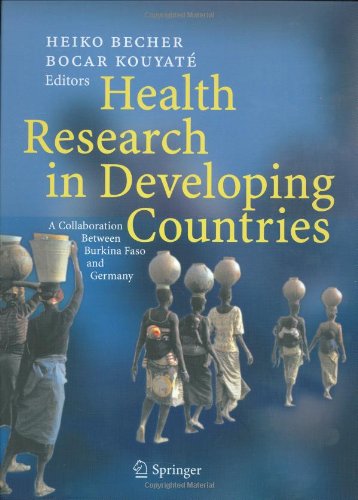- 2 402 202 книги
- Поиск
libcats.org









Who da' Man ?: Black Masculinities and Sporting Cultures
Gamal Abdel-ShehidDon't let the vernacular/ebonicized title fool you: this is a hyperacademic text that I doubt few sports fans, whether in Canada or the United States, will understand. The author attempts to analyze how sports relates or fails to relate to topics such as race, masculinity, and nation. Yes, this is an intelligent and thoughtful book by a man who I hope goes far in his career. Still, it frustrated me in many ways.
Though the author says he is a fan of X and Y sport, you wouldn't think it from his analysis. Whether it's basketball, football, track, he doesn't have anything good to say about the state of Canadian athletics or the few blacks involved in them. For this author, the glass is definitely half empty, if not entirely empty. Near the beginning, he questions whether professional sports is labor or art, but he never asks about pleasure. Though football players have been given statistics that say they do not live as long as non-football players, most of them say they would not have changed professions regardless. The joy of playing and watching sports never comes up at all in this book. You would have thought a sports-hater like me wrote it, not someone who claims to be a fan.
The author always puts "race" in quotes. It may have been profound when Skip Gates did that while editing a book years ago, it is not now. Gates has already been criticized for it. Acknowledging that race means little biologically shouldn't erase the fact that it means a lot sociologically and historically, the fields which this author ponders. Race is no more "socially constructed" than any other terms. "Masculinities" never gets put in quotes but those are topics that are highly malleable, nebulous, and significantly debated. If the author is so uncomfortable with race, why is he so clearly writing in the field of Africana studies?
The author shows that he is well-read, quoting from diverse sources such as Judith Butler, Michael Dyson, C.L.R. James, etc. However, I am quite surprised that men's' studies icons such as Michael Messner, Robert Staples, Devon Carbado, or R.W. Connell never come up. The author tries to avoid either-or thinking and logic. However, just bringing up X and negative X doesn't make the discussion penetrable. In fact, the author throws around all kinds of made-up terms like "good boy feminism," "buggin' out militancy" etc. that only add to this book being gobbledygook. He wants to have his cake and eat it too, and somehow the author thinks that means he is saying something profound.
I applaud the author tremendously for showing that when many people say "black athlete," what they mean is "straight, male, black athlete." He does a great job in trying to connect the dots between race, gender, and sexuality. However, it may frustrate many that he leaves class off the table. He does condemn some practices as "bourgeois," but that's about it. In a continent where many wrongfully think "Everybody is middle-class!" that is a problem. Further, Messner and Kimmel have written extensively that class and dreams of upward mobility define boys' entry into sports. The author uses the term "queer" a lot even though a study was done of GLBT Black Americans that adamantly showed that they do not like that term.
The author criticized writers for focusing too much on the US and not enough on Canada, but every other example that he brings up is from the United States too. This author needs to realize that there are more Black Americans (approximately 36 million) than there are Canadian citizens regardless of race (approximately 30 million). The author goes on and on about how black athletes are seen as not of the nation, of questionable citizenship. However, in the US, no one questions that Black Americans are American. It's rare for any person post-Marcus Garvey to say blacks should return to Africa. Blacks have lived in the United States since 1619, longer than most white citizens. Thus, maybe black American writers don't bring up black Canadians because the two groups are apples and oranges. The author wants to place black Canadian athletes in the spotlight, but he can't do it without mentioning black American athletes about five time beforehand.
This is one of the few academic books that I've read which does not have a conclusory chapter. Then again, his body chapters usually have conclusion. Also, he has two introductory chapters when most professors just have one. The book is riddled with pop-up boxes. They discuss themes that anyone well-read enough to read the primary text would already know about. They were highly unnecessary.
Though the author says he is a fan of X and Y sport, you wouldn't think it from his analysis. Whether it's basketball, football, track, he doesn't have anything good to say about the state of Canadian athletics or the few blacks involved in them. For this author, the glass is definitely half empty, if not entirely empty. Near the beginning, he questions whether professional sports is labor or art, but he never asks about pleasure. Though football players have been given statistics that say they do not live as long as non-football players, most of them say they would not have changed professions regardless. The joy of playing and watching sports never comes up at all in this book. You would have thought a sports-hater like me wrote it, not someone who claims to be a fan.
The author always puts "race" in quotes. It may have been profound when Skip Gates did that while editing a book years ago, it is not now. Gates has already been criticized for it. Acknowledging that race means little biologically shouldn't erase the fact that it means a lot sociologically and historically, the fields which this author ponders. Race is no more "socially constructed" than any other terms. "Masculinities" never gets put in quotes but those are topics that are highly malleable, nebulous, and significantly debated. If the author is so uncomfortable with race, why is he so clearly writing in the field of Africana studies?
The author shows that he is well-read, quoting from diverse sources such as Judith Butler, Michael Dyson, C.L.R. James, etc. However, I am quite surprised that men's' studies icons such as Michael Messner, Robert Staples, Devon Carbado, or R.W. Connell never come up. The author tries to avoid either-or thinking and logic. However, just bringing up X and negative X doesn't make the discussion penetrable. In fact, the author throws around all kinds of made-up terms like "good boy feminism," "buggin' out militancy" etc. that only add to this book being gobbledygook. He wants to have his cake and eat it too, and somehow the author thinks that means he is saying something profound.
I applaud the author tremendously for showing that when many people say "black athlete," what they mean is "straight, male, black athlete." He does a great job in trying to connect the dots between race, gender, and sexuality. However, it may frustrate many that he leaves class off the table. He does condemn some practices as "bourgeois," but that's about it. In a continent where many wrongfully think "Everybody is middle-class!" that is a problem. Further, Messner and Kimmel have written extensively that class and dreams of upward mobility define boys' entry into sports. The author uses the term "queer" a lot even though a study was done of GLBT Black Americans that adamantly showed that they do not like that term.
The author criticized writers for focusing too much on the US and not enough on Canada, but every other example that he brings up is from the United States too. This author needs to realize that there are more Black Americans (approximately 36 million) than there are Canadian citizens regardless of race (approximately 30 million). The author goes on and on about how black athletes are seen as not of the nation, of questionable citizenship. However, in the US, no one questions that Black Americans are American. It's rare for any person post-Marcus Garvey to say blacks should return to Africa. Blacks have lived in the United States since 1619, longer than most white citizens. Thus, maybe black American writers don't bring up black Canadians because the two groups are apples and oranges. The author wants to place black Canadian athletes in the spotlight, but he can't do it without mentioning black American athletes about five time beforehand.
This is one of the few academic books that I've read which does not have a conclusory chapter. Then again, his body chapters usually have conclusion. Also, he has two introductory chapters when most professors just have one. The book is riddled with pop-up boxes. They discuss themes that anyone well-read enough to read the primary text would already know about. They were highly unnecessary.
Скачать книгу бесплатно (pdf, 1.12 Mb)
Читать «Who da' Man ?: Black Masculinities and Sporting Cultures»
Читать «Who da' Man ?: Black Masculinities and Sporting Cultures»
EPUB | FB2 | MOBI | TXT | RTF
* Конвертация файла может нарушить форматирование оригинала. По-возможности скачивайте файл в оригинальном формате.
Популярные книги за неделю:

Проектирование и строительство. Дом, квартира, сад
Автор: Петер Нойферт, Автор: Людвиг Нефф
Размер книги: 20.83 Mb

Система упражнений по развитию способностей человека (Практическое пособие)
Автор: Петров Аркадий НаумовичКатегория: Путь к себе
Размер книги: 818 Kb

Сотворение мира (3-х томник)
Автор: Петров Аркадий НаумовичКатегория: Путь к себе
Размер книги: 817 Kb

Радиолюбительские схемы на ИС типа 555
Автор: Трейстер Р.Категория: Электротехника и связь
Размер книги: 13.64 Mb
Только что пользователи скачали эти книги:

Жили-были три гуся
Автор: Кривин Феликс ДавидовичКатегория: Русская классическая проза
Размер книги: 57 Kb

Н.В.Шиянов. Устройства для настройки магнитофонов (МРБ-1121, 1988, djvu)
Автор:
Размер книги: 1.92 Mb

100 Q&A About Gastric Cancer (100 Questions & Answers about . . .) (100 Questions and Answers)
Автор: Manish A. Shah
Размер книги: 3.37 Mb

Health Research in Developing Countries: A collaboration between Burkina Faso and Germany
Автор: Heiko Becher, Автор: Bocar Kouyaté
Размер книги: 4.98 Mb

Self-Analysis in Dianetics
Автор: L. Ron HubbardКатегория: Scientology; Self-Help
Размер книги: 8.15 Mb




